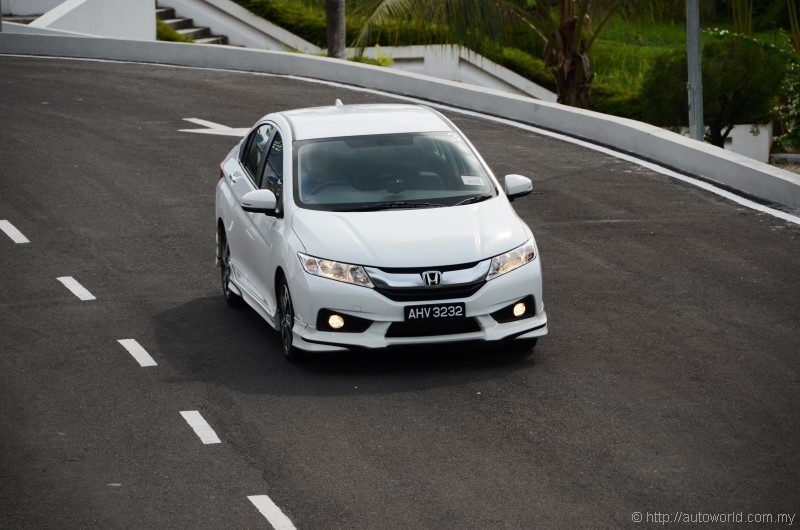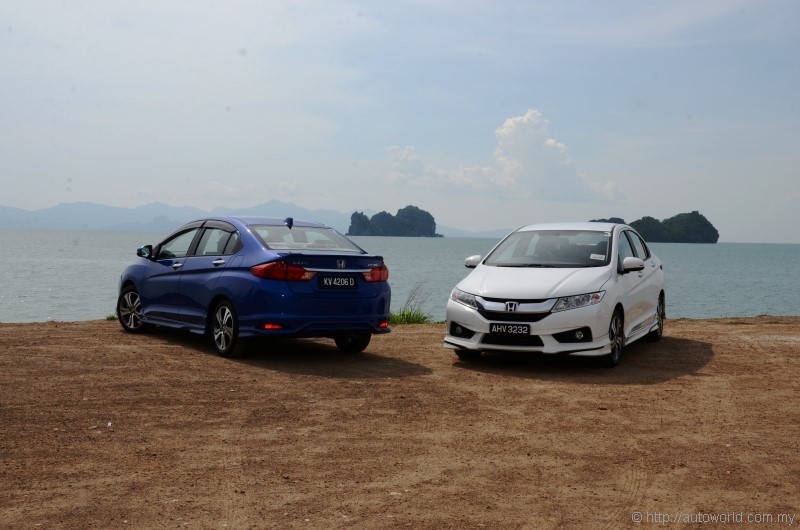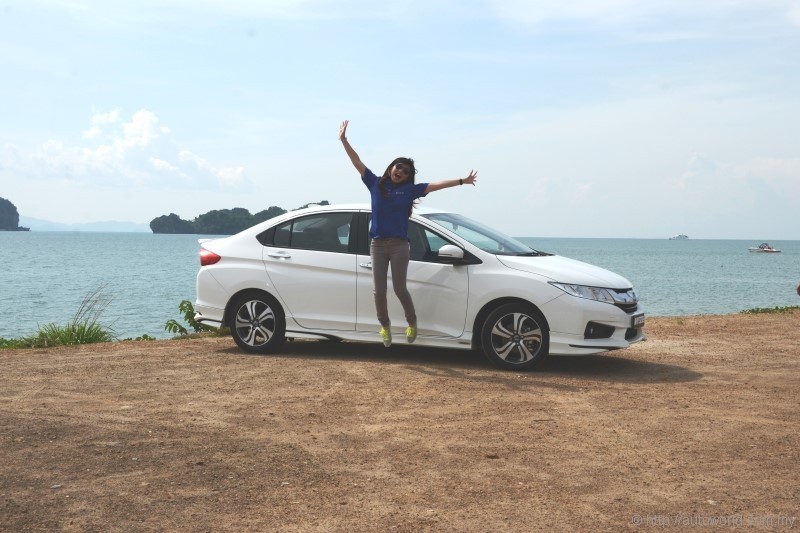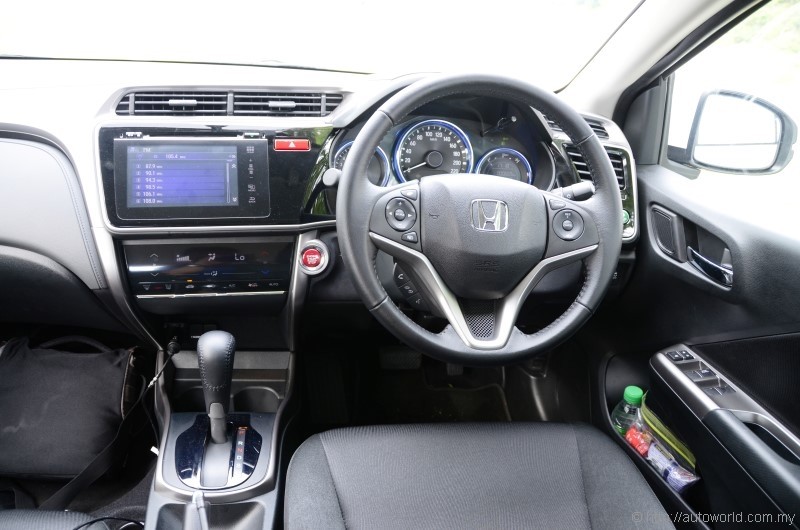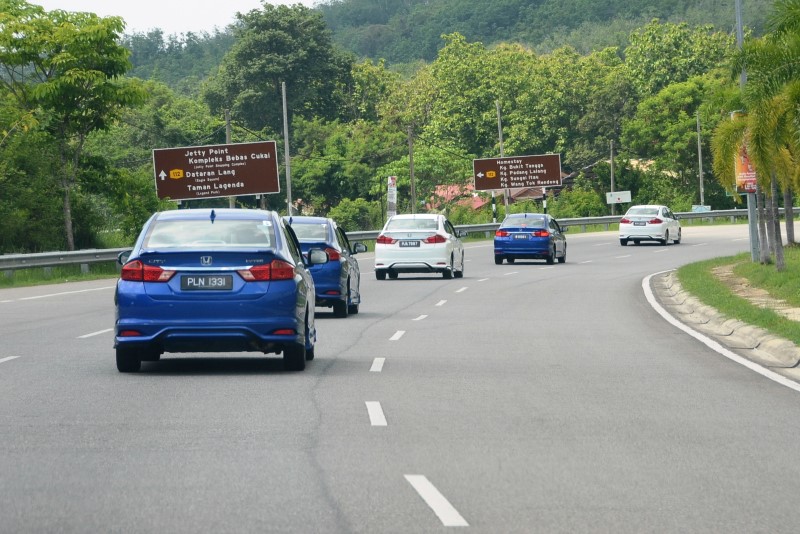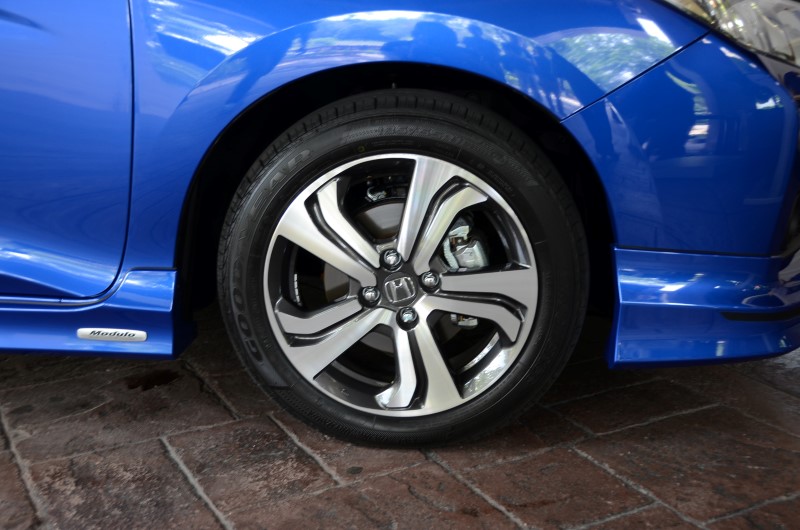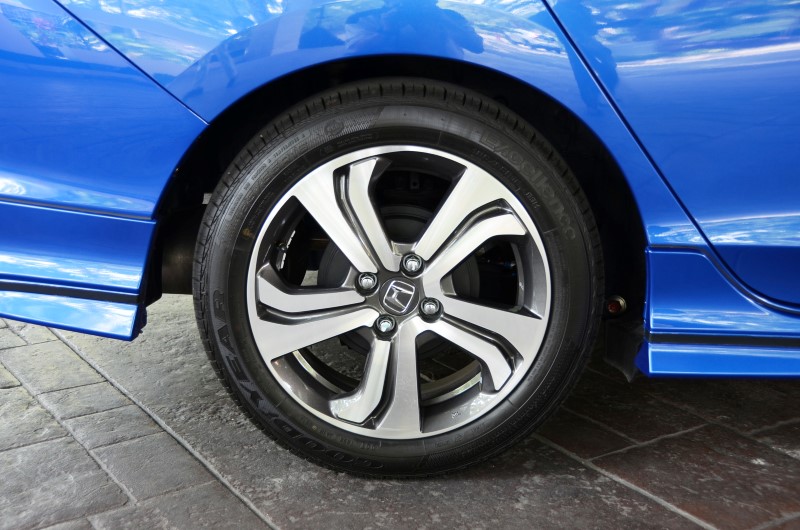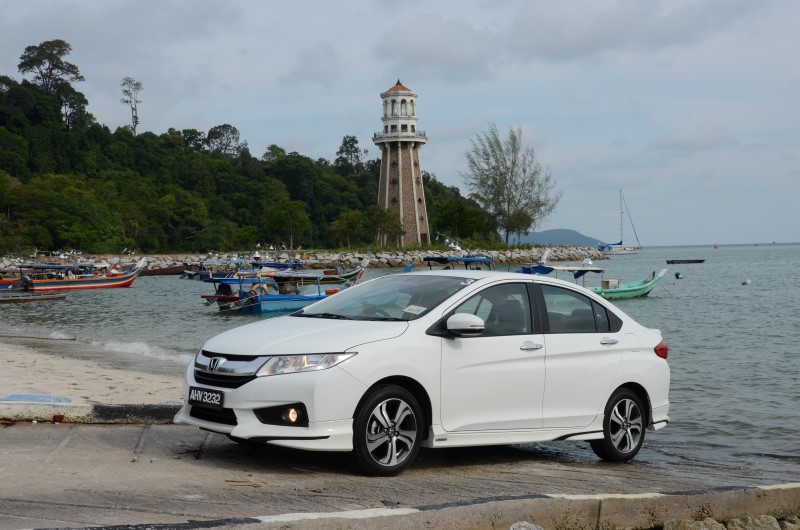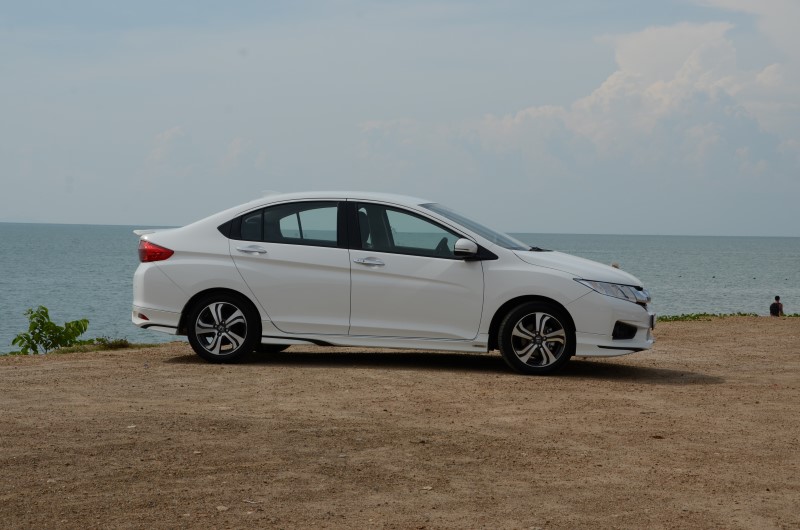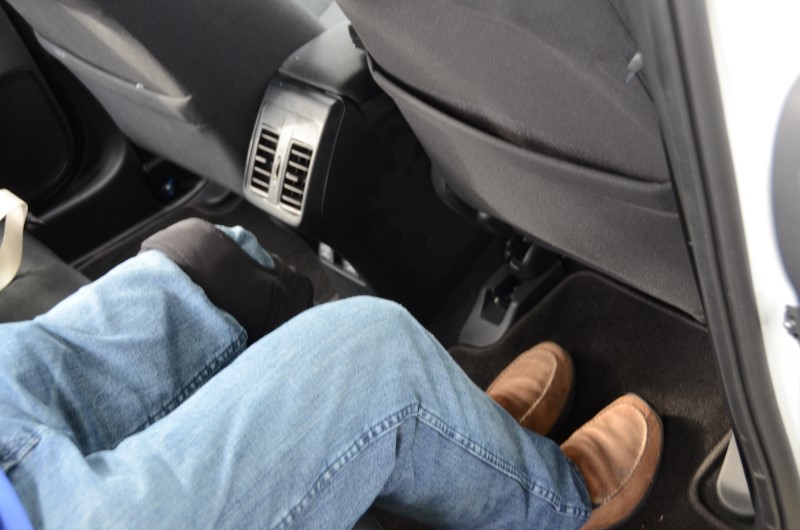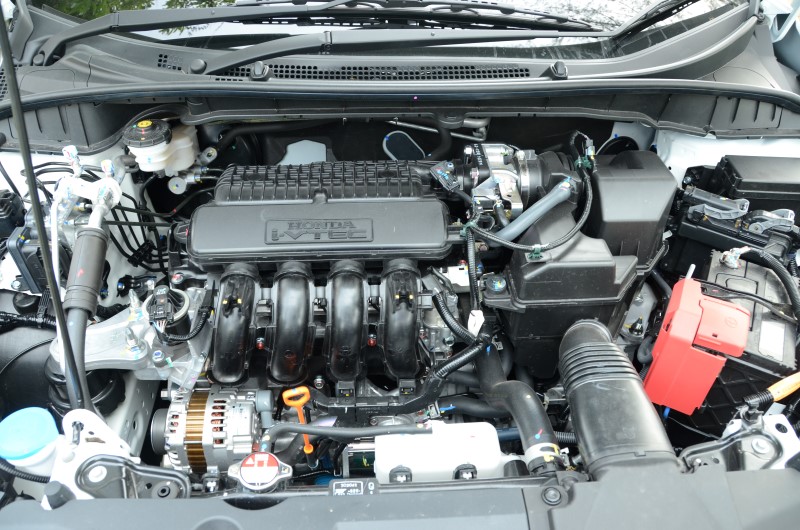New 2014 Honda City CKD Malaysia Version Proves to be Best in Class
A group of motoring media flew to the beautiful island of Langkawi last week to check out the all-new 2014 Honda City, the Malaysian CKD (Locally assembled) version. This is following our recent test of the Thailand version in Phuket two months ago, which is covered in another article in Autoworld.
Generally, there are some minor differences in the specifications- the main difference being there are no paddle shifters in the Malaysian variants, as forewarned by Honda Malaysia, but there is hope yet that it may come with the next facelift version which should take place in about a year’s time. Malaysia gets four variants, starting with the entry level S, moving upwards in grade to the S+, the E and the top range V with all the goodies. For those who want to go even further, there are two Modulo (Honda Accessories) packages at RM1,700 and RM3,200 for body upgrades.
I think a note of appreciation is due to the Honda Malaysia team for making this test drive one of the most meaningful ones to date, as they put together a very interesting test programme in which we not only tested the new Honda City, but organized side-by-side testing with its major competitors. I actually have driven all of the competitors’ models before, but each drive was in isolation, and after testing so many cars over a period of time, it is quite difficult to gauge if there are any differences between the different cars. By gathering all the competitive makes in one place, it gives us media the opportunity to compare. By doing so, Honda is indeed taking a huge risk – what if the media find another brand that is superior? However, I do suppose that they have done their homework well, as the new Honda City aced all the various exercises and came up as top-of-the-heap.
Firstly, we shall discuss the driving dynamics and a little about the car – as expected, the Malaysian version of the Honda City did not fall short in any way in terms of engine performance, road handling, interior specifications and comfort when compared to the Thailand variants, except for the Paddle Shifters which do add to the fun of driving, at least for me. When asked why the paddle shifters were omitted, we were told that Honda Malaysia did a customer survey and apparently the majority of the respondents didn’t really care if the paddle shifters were there or not. I do not doubt these findings, as up to 90 percent of the populace are mainstreamers who just need an ordinary car, although amongst them there would be the accessories geeks who just want everything that exists. The remaining 10 percent is where I think I would be; the ones who are more performance oriented, and place more emphasis on performance and driving dynamics.
The best specifications are in the V grade variant, as it has all the bells and whistles, which includes cruise control, touch-panel automatic air-conditioner controls, an 8-speaker audio system, a HDMI socket, Voice recognition, side curtain airbags, and i-side airbags. The next best model would be the E grade variant that shares the V grade smart entry and Push-Button Start, steering wheel audio controls, front centre console with arm rest, rear armrest, power retractable door mirrors, and rear air-conditioner vent.
The E grade also shares the V grade safety features, namely the VSA (Vehicle Stability Assist), HSA (Hill Start Assist – keeps the car from rolling while starting off on a slope), and Emergency Stop Signal.
Let’s now talk about the comparative tests against the Honda City’s competitors – we will not divulge the exact cars we used for the comparative tests – suffice to say that they are the main contenders for this category of vehicles.
The first test was to do a ‘double lane change’ exercise to simulate a sudden lane change to avoid an obstacle, and another one about fifty metres on, to avoid another obstacle. The obstacles were made up of stacked empty cardboard cartons, with cones lined up to determine the path we were supposed to take. The whole idea is to simulate an emergency ‘steer and avoid’ manoeuvre, and we are required to go at a speed of 60 km/h, without braking. In effect, we needed to turn a quick left/right avoiding action, twice. The road condition was dry. Here is what happened.
I started the exercise with the competitor models first, one by one, working my way through to the Honda City. For each test, I accelerated to the required 60 km/h speed, then did the double lane change without braking, as specified.
Personally, I do consider myself quite an accomplished driver, with five Malaysian Rally Championship titles, and multiple winner of Series Production races at Batu Tiga (when it existed) and in Penang. However, on my first try with a competitor’�s car, I totally lost control after the first obstacle and the car went sideways into the second barrier, sending all the cardboard boxes flying. In disbelief, I went in the same car again, and the exact thing happened again. Repeating this exercise with two other competitors, i hit the boxes again with one car, but managed to get through with another. With the Honda City, I went through without any incident. What I learnt here in this exercise is how the VSA (Vehicle Stability Assist) actually helps the driver to control the car when things go awry. The exercise was in dry conditions, at only 60 km/h: I can imagine what would happen to an untrained driver at the same speed, in the wet. If I had to buy a car for any member of my family, I would want it to have a stability control system for the added safety.
Next, there was a drag race that pitted the Honda City against the competitors – I didn’t take part in this as I was pre-occupied with finding a good photography spot, but my peers did so, and in all instances, the Honda City was reportedly the fastest of the lot. Finally, there was a back-to-back drive featuring all the four competitive cars, and form this I glean that the Honda City has superior handling, the best handling, and the quickest; there was one competitor that had as good handling characteristics as the City, but it lost out in acceleration in a big way as it had 15 horsepower less.
All things said and done, market acceptance of any car depends on how it is packaged, and how it meets the wants and needs of its target market. At this moment in time, it appears that the Honda City is top in its class, in terms of handling and performance. However, we note that it is only the top two variants (E & V) have VSA which sets them apart from the competition in terms of superior stability. The cost of technology is always an issue, which is why there are four variants of differing specifications to suit different pocketbook sizes. The City’s competitors will be looking at it, and will be coming out with improved models using this one as a benchmark; the constant one-upmanship by car makers benefits the consumers. Today it is the City – tomorrow it will be another car, the battle goes on.




